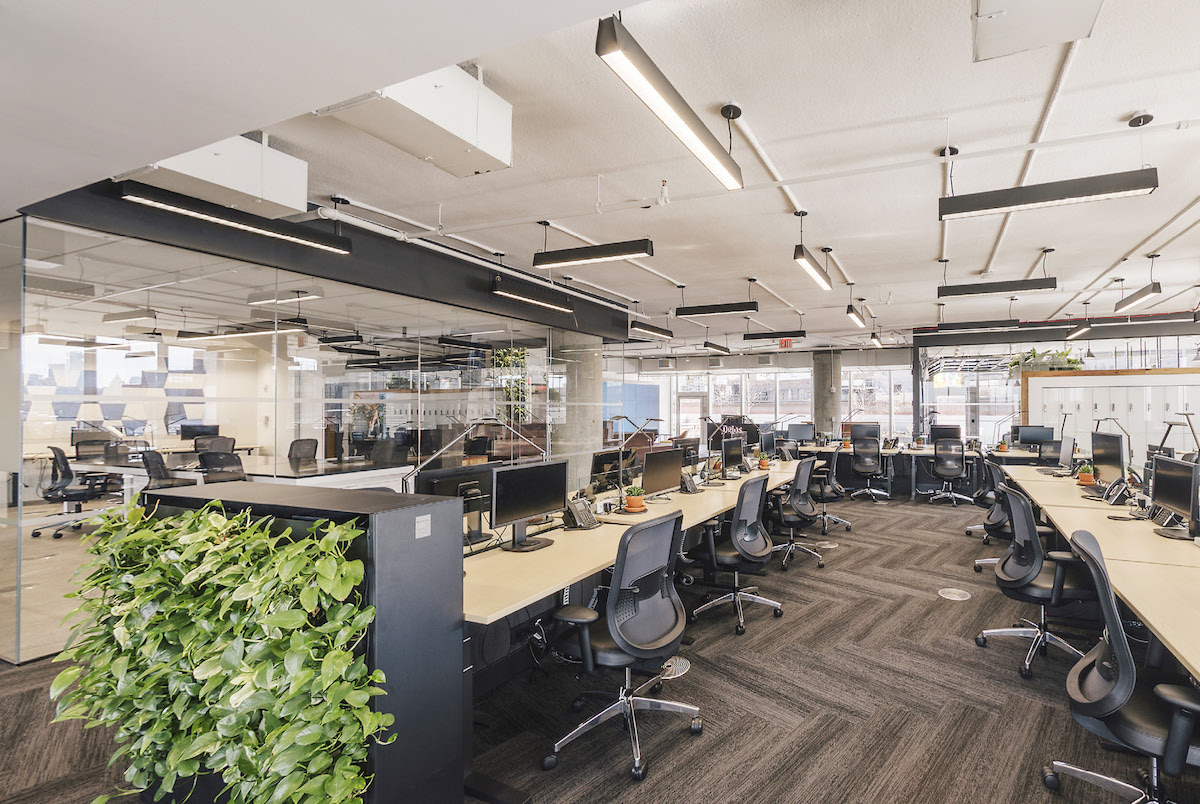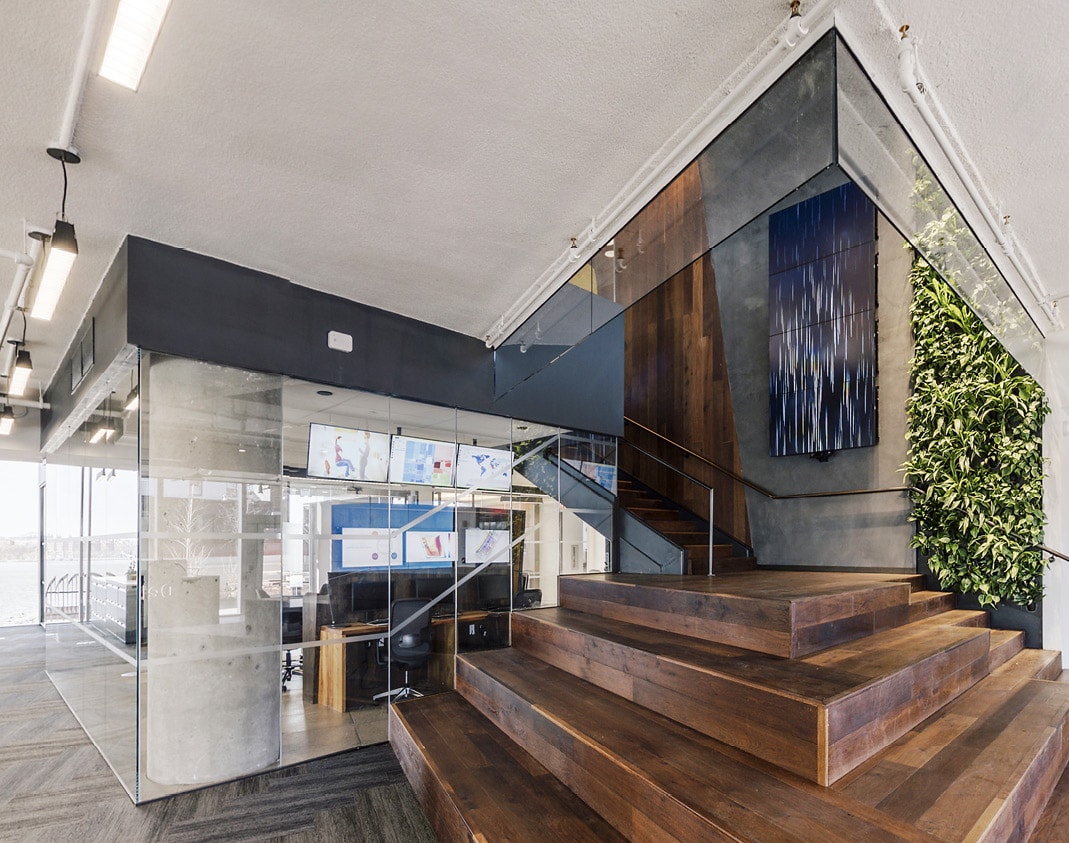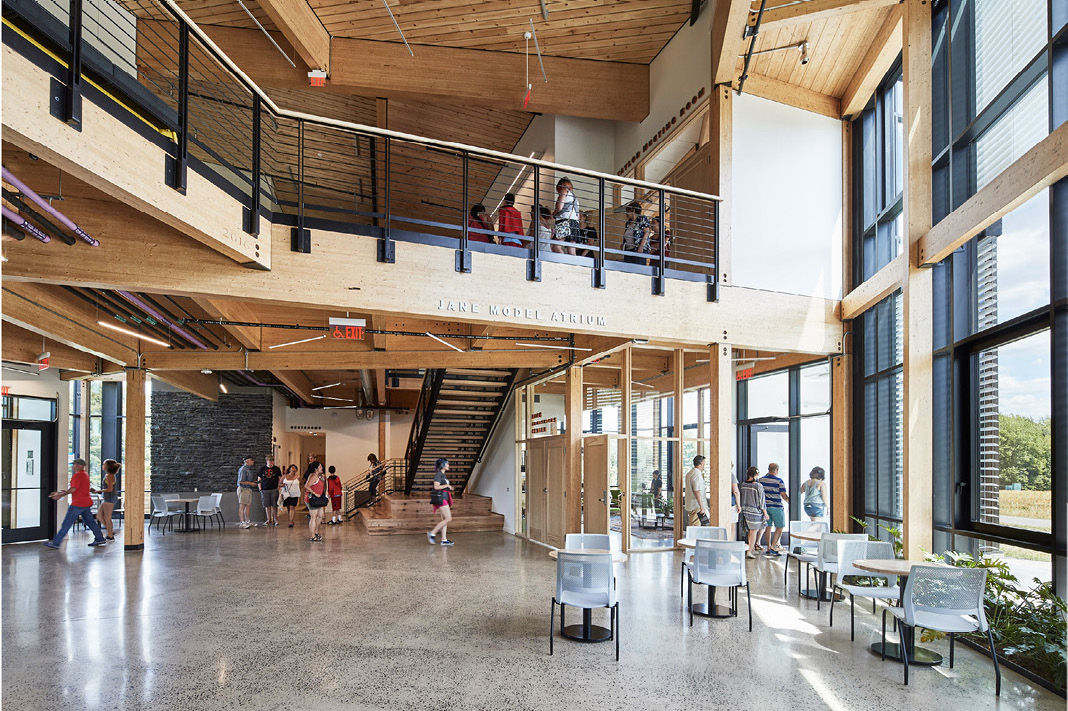ASSA ABLOY knows locking systems are the linchpin to energy savings.

[Photo: ImagenSubliminal]
Sometimes a groundbreaking product is awe-inspiring in its complexity, in its shiny new technology. Other times, however, the thing that pushes the envelope feels deceptively simple and familiar—yet delivers showstopping energy savings.
The latter is the case for ASSA ABLOY’s EcoFlex electrified mortise lock. Unlike previous generations of commercial locking systems, in which the bolt moved using solenoid, the new iterations are powered by a step driven motor. This way, the locking system remains secure but uses dramatically less energy. “The amount of power required is just a tiny fraction of what was previously required,” says Peter Boriskin, vice president of commercial product management at ASSA ABLOY Americas, likening it to a hybrid vehicle at a stoplight.
Switching to EcoFlex technology, in fact, can reduce power use by more than 90%, Boriskin says. This progressive technology has been shared and applied to products like power supplies, maglocks, and exit device trim within other ASSA ABLOY operating companies, promoting internal adoption of sustainability as well as cross-functional collaboration.
EcoFlex is not just encouraging for the teams at ASSA ABLOY, since power reductions can result in major savings for the commercial and institutional clients ASSA ABLOY serves. A college campus that switched to EcoFlex motor-powered locks, for example, ended up saving thousands of dollars in energy bills, he says. “Even for folks who may not be thinking of sustainability as a core value of their business, there isn’t anybody who isn’t looking at the bottom line,” Boriskin says. “And when you actually can do good, where’s the harm? Everybody can find something about it that’s beneficial.”
FROM OUR NOV+DEC 2018 ISSUE

The preferred publication of leading green professionals.

Wright Builders spent months sourcing ingredient lists before building the R.W. Kern Center. ASSA ABLOY made their job easier by providing Declare labels that list material ingredients for doors, locks and exit devices, hinges, door operators, accessories, and pulls. [Photo: Courtesy of ASSA ABLOY]
Creative Solutions
ASSA ABLOY, founded in 1994, is the world leader in door opening solutions. And with innovations like EcoFlex, it has proven itself to be an industry leader in sustainable solutions, focusing on responsible products across various divisions. Within the door portfolio, the company realized there was an opportunity to enhance performance by considering doors’ vital role in the building envelope.
ASSA ABLOY approached this by reconsidering how the company was testing the doors’ performance, according to Stacey Callahan, vice president of marketing and innovation for ASSA ABLOY’s door group. It had previously followed the industry standard calculated core test, in which a section of a door is removed and that section is tested for thermal performance, she says. The problem was, that test didn’t give an accurate indication of how the door
would perform.
That led ASSA ABLOY to assess its performance in the real world. The steel-stiffened design typically used on exterior doors for excellent durability is also a conductor of heat or cold transfer between the door and the elements outside. The company took this realization as an opportunity to improve, and the designers headed back to work. They came up with an ingenious solution: The steel-stiffened core remained, but with an additional layer of steel that was glued to the inside of the door to act as a thermal barrier.
The new doors that resulted, the Trio-E line, drastically cut heat loss. At a U factor of 0.36, it’s 50% more efficient than other steel-stiffened commercial doors on the market, according to ASSA ABLOY. And not only is it strong and energy-efficient, it’s aesthetically pleasing, too, because you don’t see any weld marks on the surface of the door. That’s three benefits in one—hence the name “trio.”

Delos has set out to transform indoor environments for building inhabitants. They accomplished this by incorporating ASSA ABLOY products into their office, while certifying the space for LEED, WELL, and LBC. [Photo: ImagenSubliminal]
True Transparency
ASSA ABLOY doesn’t just create sustainable and efficient products—it allows customers to see for themselves. It started out as a commitment to help consumers make the best choices. “There’s so much noise out there,” Boriskin says. “What should we be focused in on?”
The company decided to focus its efforts on transparency through Environmental Product Declarations (EPDs), Health Product Declarations (HPDs), and Declare labels. The EPD provides an at-a-glance look at a product’s life cycle, from cradle to gate. ASSA ABLOY currently has EPDs for more than 100 of its products. The HPD focuses on the health impacts of a building on its occupants. “We’re proud of what we’ve accomplished, because it’s not just about making sure you have one EPD,” Callahan says. “We are continuously striving to have more and more and more.” Their goal? To have both EPDs and HPDs for all ASSA ABLOY’s products.
“We’re not doing this just for us,” says Amy Vigneux, director of sustainable building solutions for ASSA ABLOY. “We’re doing this to drive the industry in a positive direction and to answer the call of a much more demanding stakeholder.”

ASSA ABLOY helped the R.W. Kern Center achieve the rigorous Living Building Challenge standards. [Photo: Courtesy of ASSA ABLOY]
THE IMPACT
ASSA ABLOY’s EcoFlex electrified mortise locks reduce energy use by up to 96%. The EcoFlex electrified exit trims reduce energy use by up to 95%.
A VISION FOR 2020
ASSA ABLOY’s products help customers reduce their environmental footprint, but the company’s commitment doesn’t stop there. Leadership has outlined a focus on reducing operational impact, with a focus on cutting energy and water consumption as well as reducing carbon emissions. Between 2015 and 2020, ASSA ABLOY aims to:
- Boost energy efficiency by 20%
- Reduce water intensity by 20%
- Boost renewable energy usage by 20%
- Reduce water generation intensity by 20%
*2020 environmental targets as listed in the ASSA ABLOY 2017 global sustainability report, issued in accordance with GRI standards.

